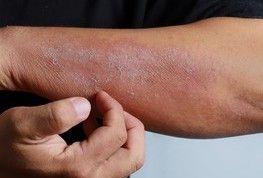Chronic Spontaneous Urticaria and Bruton Tyrosine Kinase: A Multispecialty Expert Discussion : Episode 2
Opinion
Video
Pathophysiology of Chronic Spontaneous Urticaria
Author(s):
Panelists discuss how chronic spontaneous urticaria develops through 2 distinct pathways: autoallergic CSU involving IgE-mediated mast cell activation (type I hypersensitivity) and autoimmune CSU where IgG autoantibodies target FcεRI receptors or IgE itself (type IIb hypersensitivity), both ultimately leading to mast cell degranulation and wheal formation.
Video content above is prompted by the following:
- Describe the pathogenesis of chronic spontaneous urticaria (CSU), including the IgE (autoallergic; type I) and IgG (autoimmune; type IIb) CSU subtypes.




